
51 minute read
Discover New Zealand’s secret landscapes -Page
New Zealand’s landscapes are breathtaking and are a true delight to the eyes. One is certain to be astonished by beautiful landscapes at every bend. While the entire country is gorgeous, there are a few areas that stand out for being the most unique and untouched places in New Zealand. Home to mountains like skyscrapers, waterfalls cascading like velvet and the quiet, stillness of a land before time, it’s a place to experience the true, raw beauty of nature. New Zealand is full of these marvels which is sure to awaken your inner explorer. We present to you 4 beautiful & untapped New Zealand landscapes that are sure to leave you in awe of the beauty of nature:
Mt Cook/Mackenzie
Advertisement
The Mackenzie region is tucked nicely halfway between Christchurch and Queenstown, but if feels like a world all of its own. It’s one of few International Dark Sky Reserves in the world, known for transforming into a crystal-clear blanket of stars by night. Gaze at the milky way from a hot pool at Tekapo Springs or if you want a closer look at the planets, the Dark Sky Reserve offers tours at Mt John Observatory, New Zealand’s premier astronomical research centre. By day, the region offers sights just as spectacular with remarkable glaciers set amongst towering mountains.
Southern Coastline (Catlins, Waitaki, Dunedin)
Throwback to a time when nature felt raw, untouched and unchartered; the Southern end of the country wraps around a moody coastline and lends itself to panoramic views, endlessly stretched horizons and other worldly landscapes. Nugget Point offers striking ocean views dotted by rocky islets named by Captain Cook for looking like pieces of gold, and a pathway leading to the towering lighthouse perched on the edge of the cliff. With nature comes wildlife and this region is bursting with cute and furry animals. Whether it’s Oamaru’s Little Blue Penguins adorably running in from shore to find shelter or Dunedin’s Fur Seals and Yellow Eyed Penguins parading on the beach, there’s plenty to discover.
Auckland
The largest city in the country is more commonly known for its urban centre, but just a short drive beyond the high-end stores and bustling city streets is a tale of nature from two diverse coasts. The east coast lends itself to calm, turquoise waters and white sand beaches like Pakiri, perfect for horse riding. While the west attracts scenes of raw, moody nature with black sand beaches at Piha and Karekare, towering sand dunes at Bethell’s beach and dense forests filled with immersive walking tracks in the Hunua Ranges. Both attract wildlife, off the east coast islands in the Hauraki Gulf like Motuihe, Rotoroa and Rangitoto are sanctuaries for native birds, meaning you can spot Kiwi, Takahe and Pāteke in their protected environments.
Hamilton Waikato
Famous for its rolling, green hills and for its beautiful and entrancing entrance to the world of Hobbits, the mighty Waikato is also an opening to an undiscovered world of natural marvels. The blinking stars of glow worms light up the caves as one wander through the natural magic of Waitomo. Above ground, Lake Arapuni is a lush, vividly green forest to immerse yourself in whether by foot or bike on the Waikato River Cycle Trail or head into the Hamilton Gardens. From an Indian Garden to Japanese to Modernist to a replica of Katherine Mansfield’s garden, the entire grounds are an immersion into another landscape.
Mackenzie Region, New Zealand
Mt Cook/Mackenzie
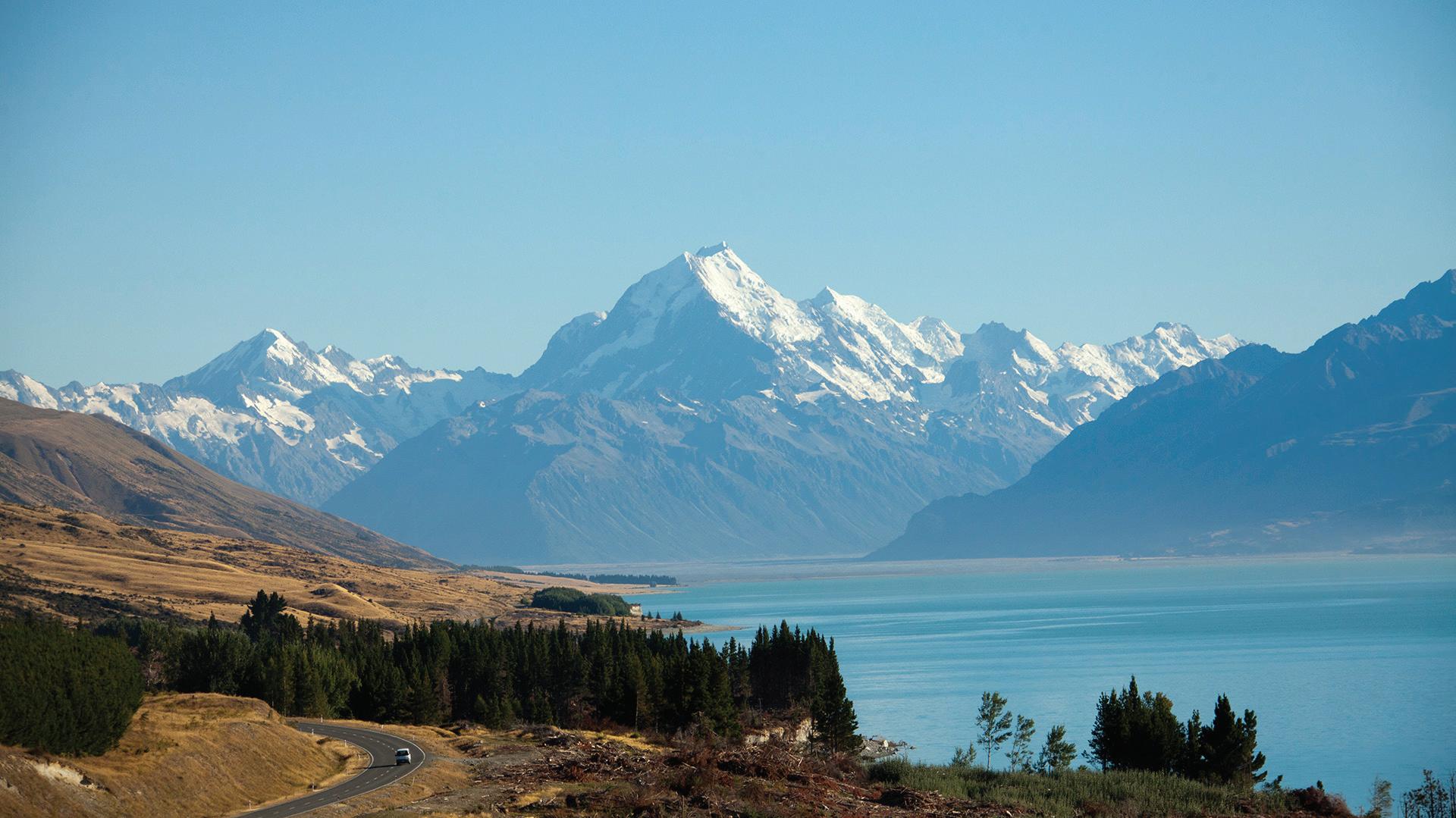
IANS
Southern Coastline (Catlins, Waitaki, Dunedin)
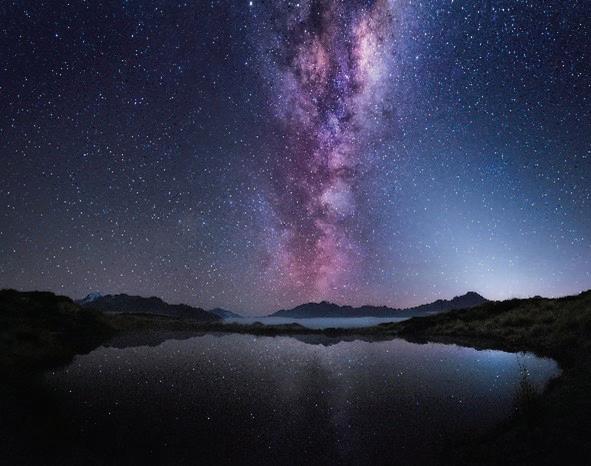
From off-the-radar beach breaks and nature escapades to scenic backwaters and wellness getaways, this year’s Most Welcoming Cities in India for 2022 by Booking.com have all been selected for consistently providing outstanding hospitality.
Palolem, Goa
A popular beach with white sand and calm waters in the bay of South Goa, Palolem has been recognised as the #1 Most Welcoming City in India in 2022, as per traveller reviews on Booking.com. You can experience the whole of Palolem beach by walking as it is a stretch of white sand that extends up to a mile.
While in Palolem, travellers can find a plethora of activities to indulge in, be it on the beach or in the water! From watching the sunset as you kayak in the water and making photographic memories to taking a long walk with your loved ones and stopping by the shacks to try traditional Goan food, Palolem is a place worth visiting and going back to.
Agonda, Goa
Agonda, ranking second on the list of the most welcoming cities, is a great place to escape from the hustle-bustle of the usual Goan life, especially if you are a fan of quiet beaches. This destination is a quaint village with a number of palm and coconut trees along tranquil waters. It is also among the main 3 nesting grounds for Olive Ridley turtles, so you have the chance to watch them from a close distance as they swim ashore and go back to the sea. Once in Agonda, you are in for some quiet mornings and lazy afternoons as you take a dip in the sea followed by relishing delicious fresh seafood. The beach has aesthetically pleasing cafes and restaurants which make for a perfect wine and dine with your friends and family. So if you have got two days free in your schedule, Agonda awaits you!
Mararikulam, Kerala
Popularly known for Marari beach, Mararikulam is Kerala's most beautiful destination, with crystal clear blue water and fine white sand. The life of Mararikulam is known to be associated with the culture of Coastal Malabar and the warmth of the beautiful sea, which makes it really exciting for travellers. Once you have arrived in Mararikulam, you are in for a peaceful break as you watch stunning sunsets every day and enjoy locally cooked food. Not so far away from Alleppey, you can also find lesser-known beaches in Mararikulam. Thumpoly beach is one such beach inhabited by the serene and natural environment scattered by many birds. A laid back, slow vacation is looking forward to you in this small and sleepy fisherman’s village.
Thekkady, Kerala
Home to India’s most enchanting natural wildlife sanctuaries, Thekkady is a hill station situated in the Idukki districts of Kerala at an altitude of 700-900 meters above sea level. Surrounded by scenic western ghats, rich plantations and dense forests, this hilltown is perfect for travellers who are wildlife enthusiasts. You can watch wildlife at a close range while boating on an artificial lake at one of the world's most natural wildlife reserves - the Periyar Wildlife Sanctuary. Along with experiencing the wildlife, you can visit Kumily to shop for locally grown traditional spices or take a quick trip to Murikkady to explore cardamom, coffee and pepper plantations.
Varkala, Kerala
Known to be the only town in Kerala where cliffs are found adjacent to the Arabian Sea, Varkala is a travellers paradise. Palm-covered red cliffs and golden beaches have made it a popular setting for selfcare and self-love. The city boasts of yoga studios, ashrams and teacher training schools as well impromptu classes that are often hosted on the beach. Along with the serene cleansing beach, the town of Varkala also houses forts, pilgrimage sites, springs, natural fisheries and more. So if Varkala is soon to be on your bucket list, get ready for complete rejuvenation.


Varkala, Kerala

Vol 2, Issue 2 Mar 1-15, 2022
SPIRITUALITY & DEVOTION Example of True Dispassion
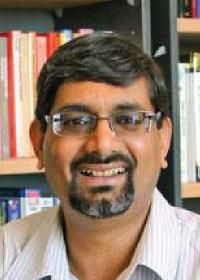
By Paddy Krishnana
Bhishma, while instructing Yudhishtra on spiritual matters, narrates the story of an ascetic and a shopkeeper which is given below. An ascetic, called Jajali (pronounced as Jaajali), lived in a forest as a recluse. He led a very austere life. He observed many vows and restrictions, including what food he ate, what clothes (or rags) he wore, how he sat and how often he practised meditation, as specified in Patanjali's Yogasutras. He studied the Vedas regularly and also practised severe penances. The penances included sleeping in the open when it was cold or when it rained, exposing himself to the harsh sun, sleeping on uncomfortable surfaces, fasting frequently and holding his breath for long durations. One of his penances was to stand still for a very long time. When he was standing still, a bird built a nest on his head. It then laid a few eggs in its nest. Jajali, who had taken a vow of Ahimsa (non-violence) did not move, lest the eggs break. He waited till the fledglings were able to fly away from the nest. During one of his penances, Jajali thought that no living being, be it a plant or an animal had accumulated as much merit as he had. Hence no living being was his equal. He thought he had great spiritual energy. Therefore he concluded he had the ability to move freely between the various heavens. Some of the Pisachas (cannibalistic demons) realised what Jajali was thinking and told him that he was not very wise. They also told him that a trader named Tuladhara (pronounced as Tulaadhaara) was wiser than Jajali. They also stated that unlike Jajali, the trader did not practice any austerities and was engaged with the world and was buying and selling things. The Pisachas concluded there was no doubt that Tuladhara had more wisdom than Jajali. Jajali was surprised by this and decided to seek out Tuladhara. When Jajali saw Tuladhara, he noticed that Tuladhara was selling various products from trees and shrubs like barks, leaves, herbs, fruits, roots, and juices. Jajali approached Tuladhara and asked him to explain how he obtained his spiritual wisdom. Tuladhara indicated that he was not very learned and just went about his daily life like a normal person. Tuladhara explained that he purchases things from different sellers and on-sells them to his customers without cheating anyone. He also does not quarrel with anyone nor does he cherish or have aversion for anyone or anything. He also explained that he views himself to be a friend to all creatures and has the welfare of all creatures in mind. He did not obtain his spiritual knowledge from any particular scripture. Tuladhara compared himself with his scales which were perfectly even. The scales does not discriminate on what is being weighed. He, therefore, does not praise anyone nor does he blame anyone. He is just an observer who casts an equal eye on all creatures and things. For instance, a clod of earth, a piece of stone and lump of gold are the same for Tuladhara. They are all to be bought and sold -- not to be enjoyed by him. Tuladhara also explains that his attitude means that he does not have to fear anyone or anything. Tuladhara explained the practice of universal Ahimsa. Ahimsa will not lead to attaining wealth, fame or even personal spiritual merit. Thus all the Vedic sacrifices, which are for attainment of personal wealth or merit do not truly follow the principle of Ahimsa. For true Ahimsa, one has to give all creatures the assurance of harmlessness. Jajali questions how one can live without harming anything. Tuladhara agrees that it is not possible to live without killing a living entity. The aim is to minimise harm and to use resources so that they can regenerate. Tuladhara says that his house has been built with wood, grass, roots etc. but all in a sustainable way. Tuladhara also points out that agriculture is not sinless. The iron plough wounds the soil and the creatures that live in the soil and the bullocks are yoked to the plough and hence suffer. So one has to recognise the harm one is causing and try to abstain from injuring other creatures. Tuladhara explains that is the reason he is not involved in trading agricultural goods. He only trades things which are sourced directly from nature in a sustainable way. Tuladhara emphasises that Vedic ritual must avoid the slaughter of animals. Even actions such as pouring butter, milk, curds into the sacrificial fire can be viewed to be a form of violence. Sacrifices need to be internal and should be performed avoiding violence. Tuladhara explains to Jajali that one's Atman (true self or soul) is sacred. There is no need to wander the earth to visit so called sacred places. Everything including all rivers, mountains are sacred. This will ensure that one minimises harm and injury to everything. He concludes that one should practice what one considers to be one's duty after due reflection. One should not blindly follow the practices including rituals. He indicates that people have become greedy because of which a number of needless rituals, which are harmful, are being performed. He also condemns greedy priests who help perform these rituals for the misguided people and focus on their own material gain. In summary, Jajali thought he was a true renunciate and had conquered all his desires. This led him to conclude that he was truly dispassionate. However, just because he had given up things, did not mean he was actually unbiased. On the other hand, Tuladhara although engaged with this world, was a better symbol of unbiased behaviour. The shopkeeper's true dispassion was symbolised via his weighing balance. Once one has no desires, no aversion and no fear, one can be said to be on the path to attain Brahman. Bhishma points out to Yudhishtra that one must perform one's duties based on one's reasoning. One can learn about correct reasoning by observing others who are good and wise. Bhishma says that Yudhishtra should learn from Tuladhara that searching for wealth and social standing will not result in permanent happiness. Bhishma emphasises that it is not necessary to renounce kingship and become a hermit like Jajali in order to be on the path towards Moksha. One should live in the world with Tuladhara's attitude. Tuladhara's attitude is compared to a twig floating in the river. The twig just goes with the flow of the river and is not perturbed by its changing surroundings. A person who follows Ahimsa will not step on other's toes. Bhishma also points out that one's caste is irrelevant. A trader like Tuladhara can instruct a Brahmin like Jajali on spiritual matters. It is also important not to judge people. For instance, not all merchants are greedy and focused on acquiring wealth. Similarly not all the Brahmins who go to the forest are spiritual. People can be dispassionate without going to the forest. Jajali was too focused on himself to get merit and did not have the equanimity of Tuladhara. This resulted in Jajali thinking that he was superior to others. Bhishma teaches Yudhishtra that a good king ought to dispense justice with detachment for the good of his people, unlike the usual ego-filled conquerors who want to stamp their mark on history through violence and conquest. This message is similar to the idea of detached action that Krishna gave to Arjuna on the battlefield – if one acts for the sake of the action and not for the personal reward, then one is liberated from the bonds of karma. References: K. M. Ganguli: The Mahabharata of Vyasa (English Prose Translation), 1896 C. K. Chapple: Yoga and the Mahabharata: Engaged Renouncers, 2006
Paddy Krishnan is a computer scientist, who got his BTech degree from IIT-Kanpur and PhD from the University of Michigan, Ann Arbor. Being very interested in Hindu philosophy, he maintains a blog at www. goldcoasthindu.wordpress com


Disney to build 1,900 homes for fans to 'be part of Disney all of the time'

If you can't think of leaving the pristine world of Disneyland theme park resorts, the company is now planning to build villas, condos and housing complexes clustered around a 24-acre "grand oasis" in the US. The company has announced a new business division called "Storyliving", with building a community of 1,900 housing units named Cotino in the Palm Springs city of Rancho Mirage, California, a location where Walt Disney himself once lived, reports The Verge.
Disney will offer "clear turquoise waters" powered by the Crystal Lagoons technology deployed at its resorts. Amenities will include "shopping, dining, and entertainment," as well as a beachfront hotel and clubhouse hosting "Disney programming, entertainment and activities throughout the year," the report said on Wednesday. "There is incredible demand for all things Disney. Our fans continue to look for new ways to engage with us, to keep Disney as part of their lives," said Josh D'Amaro, chairman of Disney parks, experiences and products. "You can be part of Disney all of the time," he was quoted as saying in USA Today. The communities will capitalise on the company's sense of storytelling and placemaking. Instead of telling Mickey Mouse tales, they will focus on the culture, history, experience, food and other attributes of the places where they will be built. "Every single element of these communities will be steeped in a story," D'Amaro said. Prices, financing, and other details are yet to be announced. The development will include a variety of properties such as condominiums, single-family homes, and estates. "Families with young children and people of all ages will be able to purchase properties. Some of Cotino's neighbourhoods, however, will be designated for residents 55 and older, a market in which Disney seems especially interested," the report said. The amenities will include live entertainment, wellness programming and seminars. There will be a hotel and an entertainment, dining and shopping district too and the guests will be able to purchase a day pass to visit the beach. "Disney will not own the communities or be the developer of record; nor will it be building or selling the homes. It will be partnering with third parties (developers) to handle those functions," the report added. Cotino's clubhouse will be themed as a "modern-day creative studio" with each of its spaces celebrating different art forms.
Bangladesh Film Festival to showcase 1971 Liberation War triumph


Agartala, Feb 23 (IANS): The second Bangladesh Film Festival was inaugurated here on Wednesday with leaders of India and Bangladesh reiterating to jointly organise more cultural and literary events to further strengthen the bonding between the two neighbouring countries. An official from the Bangladesh
Assistant High Commissioner's office said the second edition of the Bangladesh Film Festival has been planned to commemorate the golden jubilee celebrations of the 1971 Liberation War. One film was screened at the inaugural session on Wednesday, while several other films on 'Mukti Juddha' (liberation war) are line-up for screening. Tripura Chief Minister Biplab Kumar Deb, Bangladesh Information and Broadcasting Minister Hasan Mahmud, Tripura Information and Cultural Affairs Minister Sushanta Chowdhury, along with many actors and film personalities from Bangladesh were present in the inaugural function. Bangladesh Assistant High Commissioner Arif Mohammad said that best-produced films on the liberation war would be screened in the festival to showcase the great victory and glorious history of Bangladesh before the young generations of the two countries. The role of the Indian government, especially the people of Tripura, during the liberation war would also be highlighted in the film festival, the envoy said, adding that the cultural festival aims to further strengthen the socio-economic ties between the two friendly neighbours. The festival was scheduled to be held in Agartala in October last year, but was deferred due to the communal incidents that occurred in Bangladesh during the Durga Puja festival and the subsequent incidents in Tripura.
SC suggests changing name of film 'Gangubai Kathiawadi'
New Delhi, Feb 23: Ahead of release of Alia Bhatt starrer "Gangubai Kathiawadi", the Supreme Court on Wednesday suggested changing the name of the movie against the backdrop of the several cases against it pending before courts. The Sanjay Leela Bhansali movie is scheduled for release on Friday. During the hearing, a bench of Justices Indira Banerjee and J.K. Maheshwari suggested the filmmakers change the name of the movie, in the backdrop of pending court cases. "Is changing the title possible?" the bench asked. However, the petitioner's counsel insisted on an interim stay on the release of the movie, while the respondent's counsel argued that a name change, days before the release, would not be possible. An appeal challenging the Bombay High Court order was filed by Gangubai's adopted son, through lawyers Arun Kumar Sinha and Rakesh Singh, claiming that the novel and the movie tarnished the image of the petitioner, his deceased mother and other family members and such statements in the plaint satisfy the ingredients, which defines defamation. The plea said: "Because the high court while keeping the first appeal pending, in the facts and circumstances of the present case, ought to have granted temporary injunction restraining the respondents from printing, promoting, selling, assigning etc., the novel namely 'The Mafia Queens of Mumbai' or the film namely 'Gangubai Kathiawadi', which are admittedly defamatory in nature." It added the respondents though claim that the novel or the movie are based on true facts, a defence available for the respondents to be taken up during the trial of suit, but they have not made a specific claim that no part of the novel or movie are defamatory in nature. The plea sought an injunction against Bhansali Productions from producing, directing or airing the promo of any film based on the novel, and also the Alia Bhatt movie. The top court was hearing an appeal against the high court order, which continued the stay on the summons issued by a Mumbai court in a criminal defamation complaint against actress Alia Bhatt, the producers of "Gangubai Kathiawadi", and authors S. Hussain Zaidi and Jane Borges, who wrote the book. It is likely to continue to hear the matter on Thursday.
ICCR to organise craft fair exclusively for diplomatic community in Delhi
As part of the Azadi Ka Amrit Mahotsav (AKAM) celebrations marking the 75th year of India's Independence, the Indian Council for Cultural Relations (ICCR) is organising a three-day craft fair of renowned craftsmen exclusively for the diplomatic community in the national capital. ICCR President Vinay Sahasrabuddhe said, "A three-day long craft mela (craft fair) will be organised from February 23 to 25 at Chandni Bagh in Bikaner House. The event will be inaugurated by Union Minister of State for External Affairs and Culture, Meenakshi Lekhi. The inauguration will mark the presence of about 70-75 head of foreign missions in India and few Indian dignitaries." According to Sahasrabuddhe, 22 craftsmen from 11 states will exhibit five forms of Indian traditional art forms -- Crafts (Bamboo Art), Textiles, Traditional and Folk Art, Beauty Aromatics and Recycled Products. "During all three days, the participating artisans in turn will give 45-60 minute talks with demonstrations of their skills or show videos to explain their creative processes to the visitors. The lec-dem will be on 'Gond Art' of Madhya Pradesh, 'Miniature Art' from Rajasthan, 'Bamboo Craft' from Delhi, 'Kalamkari Art' from Telangana, 'Moonj Grass Baskets' from Uttar Pradesh, 'Warli Art' from Maharashtra, and 'Natural Dye-Cotton' from Gujarat,"
Sahasrabuddhe said. "The fair will highlight how India's craft practices can help balance the ecology of the planet while sustaining India's cultural heritage, local livelihoods and meeting the Millennium Development Goals. The works depend on clean air, good soil, greenery, forest and plants, clean water etc.," Sahasrabuddhe said.
With eyes set on UNESCO tag, Panaji to host novel beach carnival
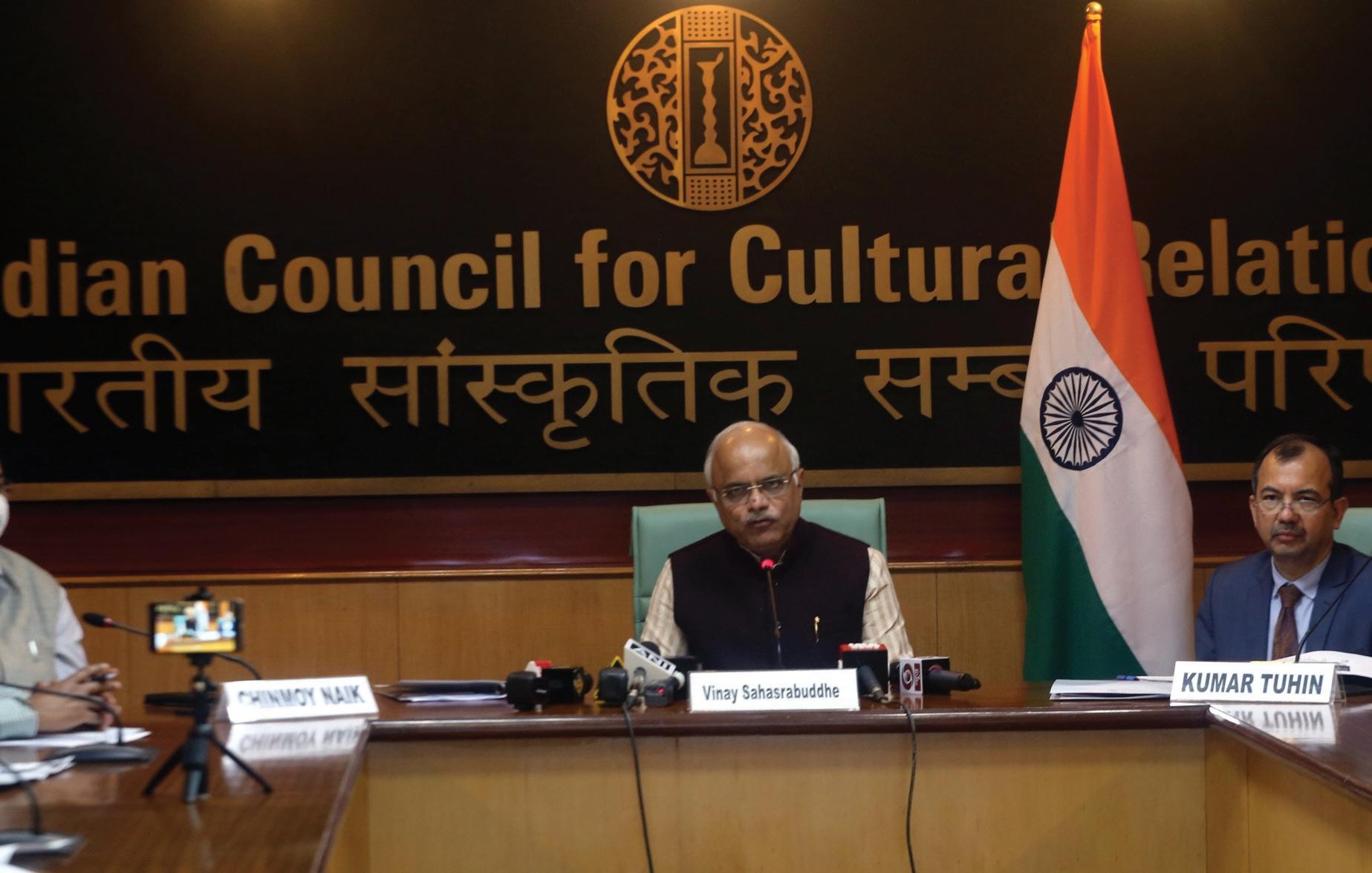
Already popular for its annual carnival parade, Panaji is looking to get into the prestigious UNESCO Creative Cities Network (UCCN) by organising its first-ever beach carnaval, scheduled for later this month. Panaji Corporation Commissioner, Agnelo Fernandes said: "'The Beach Carnaval' will focus on a bouquet of culinary experiences and help put local 'foodpreneurs' on the map. "The Corporation of the City of Panaji has partnered with FIERCE Kitchens, India's First Culinary Incubator based in Goa, to create 'The Beach Carnaval' - a dedicated zone for local culinary entrepreneurs or 'foodpreneurs' at the newly renovated walkway along the Miramar beach. The carnival will feature a host of local entrepreneurs who can put up their culinary creations at the venue." One of the focus areas of 'The Beach Carnaval' will also put the spotlight on individuals who turned into food-entrepreneurs opening up small scale food and beverage businesses during the economic dip witnessed during the pandemic. "The pandemic has been tough on many. During the pandemic many people have turned into foodpreneurs, opening small-scale, aat-home' businesses offering a variety of food. These ventures are largely driven by passion. We have decided to put the spotlight on foodpreneurs this year in an effort by the city to encourage them and offer the foodpreneurs a platform to showcase their creations," Fernandes added. Goa's colourful carnival processions, which are normally held in February before the holy season of Lent, which sees the devout fast or abstain from some food, are symbolic of the state's colonial Portuguese legacy. For the week prior to the beginning of Lent, Goa celebrates 'one last shot at having fun' before meat and liquor is shunned as part of a 40-day period of religious penitence. Lent concludes with the celebration of Easter. The event will offer foodpreneurs and aspiring chef entrepreneurs a platform to exhibit and promote their ideas, products, and talent to a diverse audience that visits the Panaji carnival festivities each year, Fernandes said. "The event will also portray the culture, heritage, and welcoming spirit of Goa. The event will feature foodpreneurs ranging from home cooks, women micro entrepreneurs, pastry and bakery enthusiasts and other hobbyists in the culinary ecosystem. We aim to provide a platform to showcase the local and regional cooking talent to the audiences of the carnival," he added. Carnival parades are normally hosted in the major cities in Goa, but this is the first time in recent history that the state capital is readying for a beach carnival event, apart from
the traditional float parade which is cheered by thousands of onlookers every year. The beach carnival this year is also being organised in association with the Atal Incubation Centre at Goa Institute of Management. "On behalf of the city of Panaji and with the support and expertise of FIERCE Kitchens and us at AICGIM, we are keen to nominate the city of Panaji as one of the creative cities in the gastronomy sector of 'UNESCO Creative Cities Network (UCCN)'. The Beach Carnaval is the first step in that direction," said Rajesh Joshi, CEO of AICGIM. "The city of Panaji is a leading tourist destination and a melting pot for global cuisine. From fine dining restaurants to culinary trails which offer unique experiences in the intimate setting of residents' homes, Panaji has much to offer. The Beach Carnaval event with the foodpreneur community at its core will add to the culinary experiences which Panaji has to offer," said Parixit Pai Fondekar, founder of FIERCE Kitchens.
India Post's Special Cover on artist S. H. Raza's birth centenary

Mumbai, Feb 22 (IANS): India Post has released a Special Cover to mark the 100th birth anniversary of renowned painter Sayed Haider Raza, whose five day-long exhibition starts at the Piramal Museum of Art in Byculla on Wednesday. The first physical expo in Mumbai after two years of the coronavirus pandemic, it showcases Raza's artworks from his time in Bombay from 1943-1950, showing the city through his lens in a then newly Independent India full of hopes and aspirations. Chief Postmaster General (Maharashtra & Goa) Veena Srinivas, Post Master General (Mumbai Region) Swati Pandey, Piramal Museum of Art Director Ashvin Rajagopalan, Piramal Group Chairman Ajay Piramal, Raza Foundation Managing Trustee Ashok Vajpeyi and others unveiled the Special Cover on Raza. The exhibition will display some unseen Raza works and select masterpieces from the Piramal art collection, reflecting his love for Mumbai and a glimpse of the upcoming city as a melting pot of various cultures. Born in Kakkaiya in modern day Madhya Pradesh, Raza lived and worked mostly in France but returned to India around 2010. He studied at the Nagpur School of Art, followed by Sir J. J. School of Art in Mumbai, and went to Paris in 1950 to the Ecole Nationale Superieure des Beaux-Arts. Over the long decades of his trailblazing artistic career, with exhibitions around the world, he was honoured and decorated with many awards including Padma Vibhushan (2013). Raza passed away in New Delhi on July 23, 2016, aged 94.
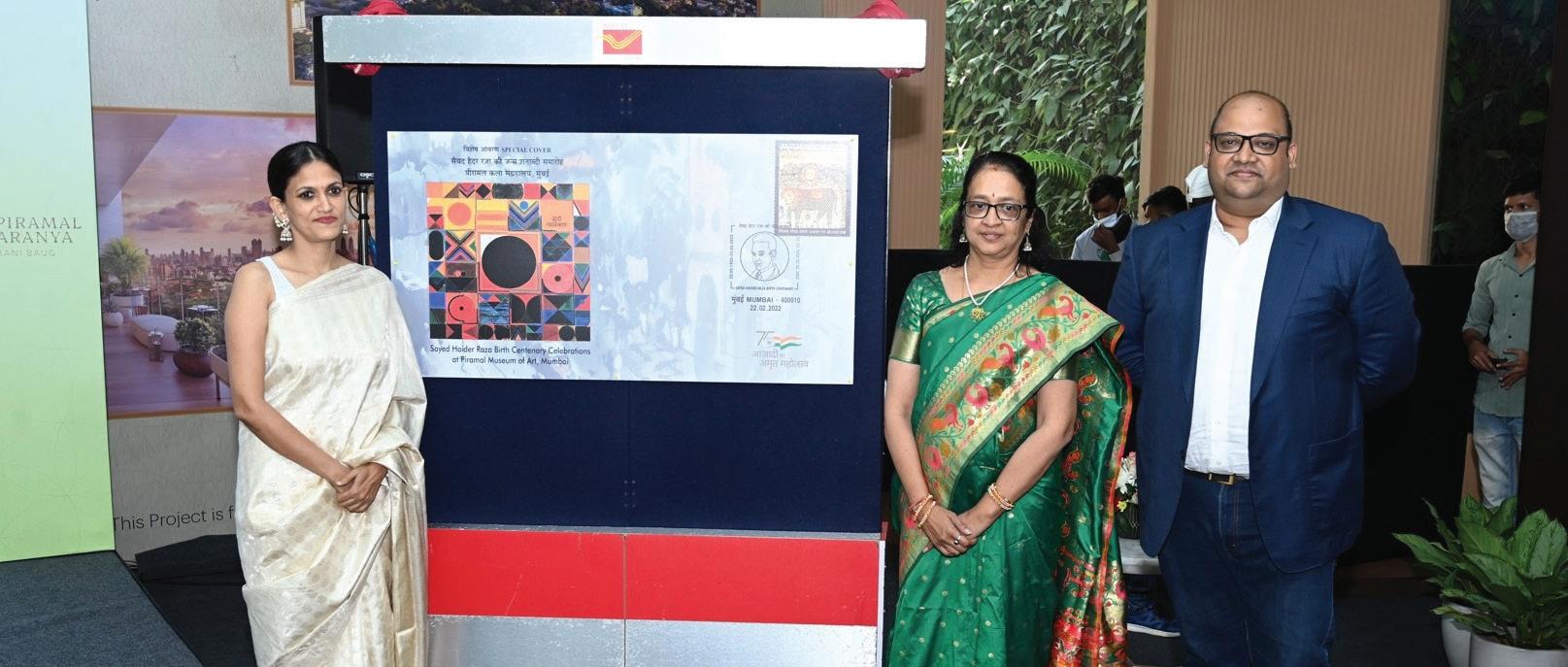
Relating mythology to modern-day lives, the Devdutt Pattanaik way

Myths are how people imagine the world but mythology is not history and not a parable either and while science tells us how the world came into being, only myths can tell us why the world came into being, thus helping us navigate our way, renowned mythologist Devdutt Pattanaik writes in a new book in which he transposes the legends of the past to the 21st century. "Myths are usually embedded in sacred stories, and so we look to these sacred stories to stitch together a narrative of how many of our ancestors thought - from the mantras in the Vedic tradition, to the bardic suta parampara, as seen in the Ramayana, Mahabharata and Puranas; and the Jataka and Jain tales," Pattanaik writes in "The Stories We Tell" - Mythology To Make Sense Of Modern Lives (Aleph) - 72 stories from India's rich treasure of myths and legends that has its origins in his "Teatime Tales" webcast in 2020, from March 21 to May 31 during the early days of the lockdown to combat Covid-19. In the book, he goes further afield - to Arabian, Greek, Roman, Egyptian and Norse myths - and even explores how myths from the Islamic and Christian worlds changed on Indian soil, "just as myths from Buddhism changed in China and elsewhere". "What you will realise is that some feelings are felt everywhere," Pattanaik writes - reinforcing the belief that no matter where you are from, the world is, indeed, one. His purpose is two-fold. "First, use the Puranic framework of desha-kala-guna (geography-history-attributes) to discuss various topics in mythology. This is to remind you that all stories exist in a context. The ideas may be timeless but the stories are not. Stories change over time, over space, and with people who transmit them," the author explains. "Secondly, use a 'post-structuralist' framework to think about myths. This simply means I don't care much for watertight categories and strict labels...labels and structures, while helpful, are also limiting," Pattanaik writes. Noting that the purpose of mythology is different from history, he writes: "History is a record of the past. Mythology explains how cultures imagine the world, and their past. As for parables, these are "prescriptive, while mythology is structural, about origins and organisation of nature and culture, in which parables may be located", the author states. The stories in the book are arranged into a variety of themes, including 'Apsara', a reflection on the portrayal of women in ancient texts; 'Karma', 'Justice', and 'Appropriation or Exchange', which show how our modern ideals of justice have been shaped by ancient scriptures; 'Unconditional Love', which is an exploration of the parity that must exist between loving partners; and 'Devas and Asuras', which illustrates how the binary of right and wrong is anything but black and white. Pattanaik writes, illustrates, and lectures on the relevance of mythology in modern times. He has, since 1996, written over fifty books and 1,000 columns on how stories, symbols, and rituals construct the subjective truth (myths) of ancient and modern cultures around the world. His books include "Pilgrim Nation", "Business Sutra: A Very Indian Approach to Management", "The Success Sutra: An Indian Approach to Wealth", "The Talent Sutra: An Indian Approach to Learning", "The Leadership Sutra: An Indian Approach to Power", and "Eden: An Indian Exploration of Jewish, Christian And Islamic Lore".
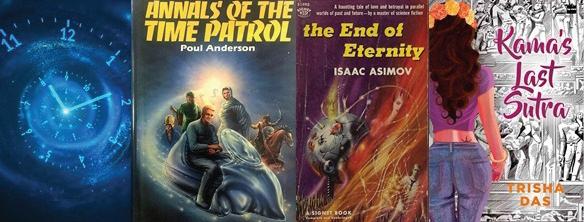
Declare Marathi 'Classical Language' by Feb 27, Maha urges Centre
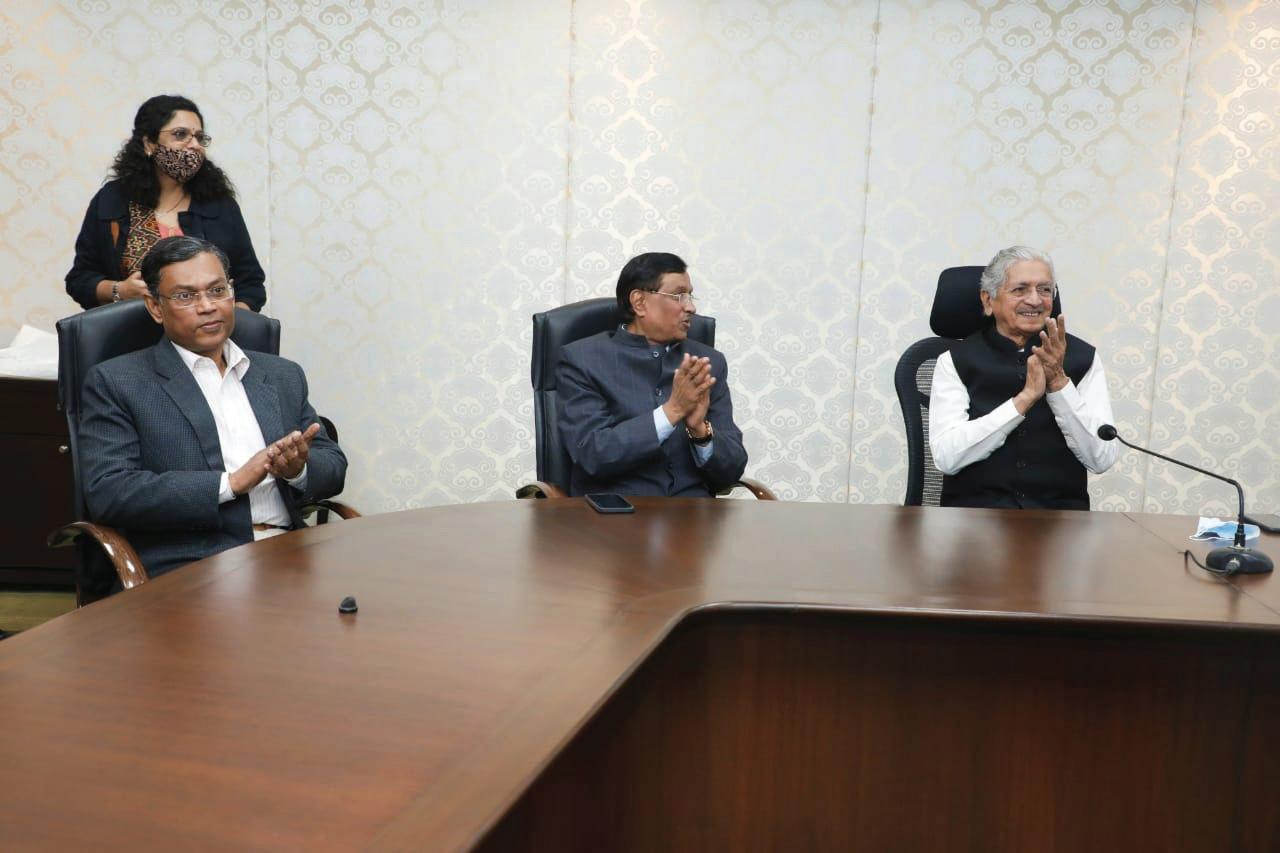
A day after dispatching 4,000 postcards to President Ram Nath Kovind, Maharashtra on Monday made a strong pitch to the Centre to accord the status of "Classical Language" for Marathi by February 27 - celebrated as Marathi Language Day. Marathi Language Minister Subhash Desai went to New Delhi and called on Union Culture Minister G. Kishan Reddy and discussed the long-pending issue with him. "We have submitted a letter and a booklet to him detailing how the state government has completed all the formalities and why Marathi deserves to be given the status of a classical language at the earliest," he said. Desai said that Reddy was extremely open to the suggestion and even conveyed that there is no doubt that Marathi deserves the honour. "We have invited Minister Reddy to come to Maharashtra on Feburary 27 and make the momentous declaration granting the classical language status which would be welcomed by the 13 crore people of the state," he added. Earlier, Desai and his team comprising officials like Bhushan Gagrai, film personality Shrirang Godbole and others gave a detailed presentation showing that Marathi language satisfies all the parameters for been made a classical language. Prime Minister Narendra Modi and Union Home Minister Amit Shah have displayed a positive approach to the state's demand and Reddy assured that the Centre would take a decision soon in the matter. On Sunday, Chief Minister Uddhav Thackeray dispatched a box containing around 4,000 postcards to the President to demanding classical language status to Marathi. The postcards - sent in a gift-wrapped box with the slogan "Abhijat Marathi Jan Abhiyaan (Mass Campaign for Classical Marathi)" printed on it - are part of an ongoing state-wide campaign which the state government hopes will fructify by February 27. This was the second lot of postcards - earlier another lot of 6,000 was sent - to the President with the same plea. In the past couple of months, people all over the state - ranging from celebs to commoners - have dropped over 125,000 postcards to Rashtrapati Bhavan. Last December, Deputy Chief Minister Ajit Pawar fired the first postcard to the President, neatly typed in Marathi and signed by him, kickstarting the trend. Presently, only six Indian languages - Sanskrit, Tamil, Kannada, Telugu, Malayalam, and Odia - have been bestowed the status of classical language, based on various parameters. Maharashtra's ruling Maha Vikas Aghadi pointed out that although the Centre took the decision in 2004 to confer the classical language status to various languages, Marathi was ignored despite repeated requests. Even a high-level committee of language experts appointed by the Centre had unanimously approved a proposal to this effect seven years ago, but there has been no further progress in the matter. Pawar had said in his postcard to the President that it was necessary to grant the status of a classical language to Marathi as recommended even by the Sahitya Akademi, at the earliest. "Marathi is not only an ancient language but also the state language, used by litterateurs, intellectuals, by people of religion besides the common masses, and ranks among the major languages in the world," he said. The Maharashtra Legislature passed a unanimous resolution recommending to the Centre to accord classical language status to Marathi in 2020. In anticipation of the exalted status, Thackeray in October 2021 cleared the proposal to construct a 'Marathi Bhasha Bhavan' on a 2,500 square metre plot in south Mumbai - a project which had been on the backburner for nearly eight years. Coming up within the Jawahar Bal Bhavan complex at Marine Drive, the work on the project is starting shortly with a completion target of 18 months, comprising a library, an expo centre, conference halls, etc, to promote the Marathi language. During the tenure of Congress Chief Minister Prithviraj Chavan, a committee chaired by litterateur Rangnath Pathare had prepared a voluminous report running into 500 pages on the same issue. The report was forwarded to the government in July 2013, but the matter remained unresolved after the change of guard both at the Centre and the state. The Akhil Bharatiya Marathi Sahitya Sammelan, which started in 1878, has demanded the classical language status for Marathi several times in the past. The status paves the way for two prestigious international-level awards for scholars of eminence in the Indian classical language, setting up centres of excellence for studies, the University Grants Commission creating or starting certain number of Professional Chairs in these languages besides dedicating various institutions for the same to promote the study and research in such classical languages. The most plaintive words, across languages, could be "If I could turn back time/the clock". While what the future will bring hangs heavy on most people, and many may not forgo a way to plumb its secrets; while human science has yet to devise a way to enable time travel, human culture, especially its literature, has no such limitations. Time travel across various media -- from "Dr Who" to "Star Trek: The Original Series" (TV, films, spin-off novels), from Rod Serling's "The Twilight Zone" to "Back to the Future" series, and from Harry Potter (remember the third installment?), to an array of science fiction masterpieces -- shows that the trope has flourished for more than a century now, and become a staple of science fiction. However, the earliest occurrences crop up in some unexpected places. The Vishnu Purana tells us of the solar dynasty monarch Raivata Kakudmi, who travels to the abode of the celestial creator Brahma to consult him on a pressing matter. He only spends a day there but is surprised to find, on his return to the mortal realm, that several aeons have passed. There are similar stories in other traditions too, especially of the "Seven Sleepers", who hid in a cave to avoid persecution of the Christians in the then Roman empire, went to sleep, and woke up centuries later. A version is also found in The Quran ("Sura Al-Kahf"/"The Cave"). These instances, and in early literary manifestations -- "Rip Van Winkle" (1819) by Washington Irving and of several others, who sleep through the ages to awaken in the future -- are more cases of time dilation than time travel. But that would soon change as science fiction emerged and flourished. The idea of a device, or some unknown natural or supernatural occurrence, propelling the user into the future, or the past, is generally held to begin with H.G. Wells' "The Time Machine" (1895), though Charles Dickens' "A Christmas Carol" (1843), in which the miserly Ebenezer Scrooge is confronted with his past and future, and given a choice to change the latter, is an earlier example in some respects. Among the earliest known works of time travel, by means of a device rather than supernatural power, is American journalist-author Edward Page Mitchell's short story "The Clock That Went Backward" (1881), in which two boys go back in time and space, courtesy of the device, and make a mark in history. As the story was targeted at younger readers, it did not create much of a splash. Though Mark Twain's "A Connecticut Yankee in King Arthur's Court" (1889), about the eponymous hero travelling back to the era of the Knights of the Round Table and bringing in elements of the future, came first, it was Wells who laid the basis for the sub-genre of science fiction. But to be considered a time travel story, a work must contain a few defining elements, such as a mechanism by which to travel through time, usually a time machine. There is one more key element, which we'll return to soon. Time travel stories also come in various flavours. One is about the inevitability of fate where the protagonists go to the future, only to find a dystopian world which is a consequence of happenings in their own time, and return to their time and try to prevent what they saw from happening. They may or may not be successful, and if it is the latter, well, you can't fight fate. The "Time Scout" books by Robert Asprin and Linda Evans are a good example. Then there are the ones where a trip into the past shows that history is different from what they thought it was, and then they change it so that it conforms to what they "know" as history -- they think they "changed the past", but this has already been done. "There Will Be Time" by Poul Anderson, Eoin Colfer's "Artemis Fowl", Robert Heinlein's "The Door into Summer" and some of his stories serve as examples. Another variant sees the heroes go to the past because things went wrong there and they want to change it to make a better "present". This throws up some sub-variants, especially when villains go to the past to change it so that the present is better for them (Austin Grossman's uproarious superhero novel "Soon I Will Be Invincible"), and thus, bad for the heroes, who might follow them to foil the attempts (Terry Pratchett's "Night Watch"). And then, even sometimes well-intentioned time travellers heading to the past to try and make it "better", may end up making it worse, either by altering the future for the bad, creating a situation where the cause-effect paradigm or even the fabric of reality is threatened, or drawing the adverse attention of entities who would like time to go as it was. Then, there is what is known as "Hitler's Time Travel Exemption Act", where it is impossible to go back and stop a real-life bad thing from happening -- say, killing Adolf Hitler before he comes to power, or savingJohn F. Kennedy from an assassin's bullet. Either it makes things worse -- the villain is replaced with an even more evil, but efficient, one or saving a hero has unwelcome consequences, or time itself will prevent this. Stephen Fry's "Making History" is what happens when you go back to eliminate Hitler, Stephen King's "11/22/63" (about saving JFK), and Ben Elton's "Time and Time Again" (about averting the assassination that led to World War I). Getting trapped leaves our heroes stuck in the past, and they now have to find how to get to their present in the future, or wait for someone to rescue them. If they can't, they have to choose between living a quiet life and trying not to interfere with the past, or using their future knowledge to make the past better. Or they might discover that they're in a situation and can't change anything even if they wanted to. An example can be found in Books 2 and 3 ("The Restaurant At The End Of The Universe" -- for the trapped part -- and "Life, the Universe and Everything", for the chancy rescue part) of Douglas Adam's "The Hitchhiker's Guide to the Galaxy". Isaac Asimov's "The End of Eternity" is about being unable to change anything. Taking from the multiple worlds theory view of quantum mechanics, some stories presage a visit to the past and changes made there, creating an alternate timeline where the future will have changed, for better or worse, due to their intervention and they might not even be able to return there. (Asimov's Norby series deals with this as well as Eric Flint's "1632", and its sequels by other writers too.) Then there are the ones about organisations that patrol time and prevent changes which could affect the past/present/future, or threaten causality, space-time, or existence. Poul Anderson's "Time Patrol" series is among the best. The temporal paradox element focuses on time travel so affecting causality that it may lead to the time travellers not being able to make the trip at all, and this could lead to the end of time/the world, or their own existence, at the least. If all this leaves you confused, don't doubt yourself. It's now time for one most essential feature of time travel stories left to be revealed -- the mind games it entails. Our minds are so attuned to the unidirectional, unispeed movement of time, that the paradoxes and mess of causality that permeate and define it, leaves many struggling to grasp the leaps in logic demanded. If you still are interested, begin with the anthologies by Mike Ashley for the Mammoth Book and British Library Science Classics series, or for Kindle readers, the Wildside Press Megapacks of time travel stories (four at the last count) for the shorter version, and a whole galaxy of the longer form. Indian examples are virtually absent, with just Shovon Chowdhury's "The Competent Authority" or Trisha Das' "Kama's Last Sutra" qualifying.
Tennessee Williams & New Orleans Literary Festival to celebrate 75 yrs of 'A Streetcar Named Desire'
After two years, the Tennessee Williams & New Orleans Literary Festival is set to return with an in-person event to celebrate the 75th anniversary of the play 'A Streetcar Named Desire' sketched by the legendary playwright. The literary fest will have a 5-day run starting from March 23 through March 27. The event's executive director, Paul J. Willis said in a statement accessed by 'Variety', "After a canceled festival in 2020 and a virtual festival last year, we are so happy to be returning to our home at the Hotel Monteleone once again for our five-day festival." "Our speakers and patrons are excited about our return, and we can't wait to celebrate the 75th anniversary of 'A Streetcar Named Desire' with everyone. Several of our special events focus on this beloved Pulitzer Prize-winning play, including our opening night, tribute reading and breakfast book club. We are working with city officials to create the safest environment possible so everyone can enjoy the festival once again", the statement further read. As per 'Variety', the five-day event will host several speakers and performers, including Constance Adler, Jami Attenberg, Megan Mayhew Bergman, Rick Bragg, Tyler Bridges, Elizabeth Miki Brina, Jericho Brown, Craig Colten, Augustin J Correro, Brenda Currin, Peter Ho Davies, Mary Gauthier, Jewelle Gomez, Peter Hagan, Miles Harvey, Ladee Hubbard, Rickie Lee Jones and Errol Laborde. In addition, Zachary Lazar, Robert Mann, Eric Nguyen, Glen Pitre, Betsy Prioleau, Kathy Randels, Nathaniel Rich, Gary Richards, Farrah Rochon, Tom Sancton, Kalamu Ya Salaam, Timothy Schaffert, Katy Simpson Smith, Oliver Thomas, Poppy Tooker, Esm� Weijun Wang, David Williams and others will grace the event as speakers and performers. Michael Cerveris will serve as the co-host on the festival's opening night festivities with New Orleans singer-songwriter Arsene DeLay. The evening will feature musical performances and scenes from 'A Streetcar Named Desire'.

Shilpa Shetty Kundra discusses traditional Ayurvedic skincare recipes

India’s rich cultural heritage especially around wellness and spirituality is not hidden from the world. Two of our Vedas have given life to sciences which are now seeing more than ever relevance & are being adopted globally. Rigveda gave birth to Yoga and Atharva Veda to Ayurveda, both of these being represented as a way of life than just processes or products. Our culture has always believed that a balanced life is a key to satisfaction and happiness. Millennials lately have been experiencing a hectic imbalanced lifestyle that eventually takes a toll on their physical and mental health. Hence, it is imperative to prioritize and focus on what is important in their lives and restore balance as otherwise, it starts reflecting on one’s external features, too, like skin discolouration, hair fall, early ageing, and more. Honasa Consumer Pvt. Ltd. (HCPL), the parent company of Mamaearth, and The Derma Co., and the fastest-growing House of Brands for personal care, launches a new skincare brand – AYUGA, a brand crafted with the perfect balance of traditional, authentic & honest ayurvedic recipes and face yoga rituals for modern millennial skincare. Commenting on the brand launch, Shilpa Shetty Kundra said, “I strongly believe in the ancient sciences and have incorporated a lot of the recipes and rituals in my life and have benefited from it. When I heard about Ayuga and the ideology behind the brand, it immediately resonated with me. The thought of using traditional Ayurveda recipes and creating modern formats of skincare like serums and gels, without compromising on the authenticity
of the ingredients is unique. I am sure the consumers would love the brand and its products; hence I urge them to restore balance in their lives through Ayuga recipes and rituals.” Honasa Consumer Pvt. Ltd., said, “We are an organization built on strong consumer centricity and direct-to-consumer format. We are constantly speaking to consumers to get real-time feedback and information on their requirements and the kind of solutions they want. Hence, we constantly research millennials’ concerns to create brands and products that serve them." Ghazal Alagh, Co-founder and Chief Innovation Officer "Ayuga stands for the marriage of rituals of yoga and recipes of Ayurveda to deliver true secrets of skin, hair, and health to the world. We partnered with Ayurveda and Face Yoga experts to consult on the product line and face yoga rituals and reimagined them in modern formats for millennials for maximum efficacy. Our products are all inspired by Ayurveda formulations which have been existing for thousands of years and have been perfected by our Vaidyas. Our application rituals are perfected by Yogi’s strong understanding of the science of yoga and its ability to open and tighten skin pores where and when required. A combination of these leads to correct absorption and impact of the product leading to a multiplier effect on your body. Partnering with Shilpa Shetty Kundra for Ayuga extended the brand’s thought of restoring balance in life. We are confident that the partnership with Shilpa will help propagate our brand proposition across millennials.” said
Does pollution age your skin prematurely?

It is often said that the three S's stress, smoking and the sun can cause skin damage. Pollution contains a lot of microscopic particles which penetrates your skin, breaks down the collagen and oxidize the lipid layer. Pollution can result in dehydration, dullness, uneven skin tone and even cause atopic dermatitis and eczema. Research has proven that now even pollution can cause premature ageing and acne. Light Up Beauty, an Indian skincare brand, has been trying to solve the issues faced by the Indian skin due to pollution. They believe in creating an honest, transparent, clean and diverse range of products in the skincare category Meenakshi Ganesh, Founder, and CEO, Light Up Beauty said, “Our mission at Light Up Beauty was to create an Indian version of the International brands which create effective but extremely expensive skincare. Our aim was to cater to every one by bringing affordable and smart skincare to the market that actually works. We also use international standard ingredients but blend them in a synergistic manner that delivers sustainable results. We want our clients to flaunt their natural complexion and bid farewell to filters and heavy layers of makeup with our glow-enhancing skincare range. We want to combat problems like pollution and UV damage which Indians commonly face. Most international brands don't provide effective solutions for such problems. At Light Up, we care deeply about these concerns and wish to deliver real products with real results.” Since pollution exists in various forms such as ultra-violet radiation, particulate matter and hydrocarbons, developing effective anti-pollution skincare has been the focus of major pharmaceutical and cosmetic companies. Though a clean diet and healthy lifestyle can help address some of the damage caused by pollution, intense hydration and topical Anti-Oxidants make a huge difference in combating pollution.
It's all in the eyes
When it comes to cosmetics, a dramatic eye is a game changer. We've seen a lot of shifts in trends over the last few years, from plain natural look to heavy glam. We'll look at a few different ways to draw attention to your eyes and take your makeup to the next level. Eyes have a lot of power, and when emphasised correctly, they may draw attention to the rest of your face. Tips shared by Nupur Gupta, Founder, CEO and master trainer at the Nupur Gupta Academy. Graphic liners In their daily makeup routines, most people opt for a classic winged eyeliner. You can, however, go for a graphic liner if you want to liven things up. Even though graphic liners have just lately become fashionable, they are sure to make you stand out. You can go with the conventional black or go all out with colourful combos, as many celebrities do these days. There are a lot of various methods to get this look, which makes it even more enjoyable!
Smokey
The ideal Smokey eye makeup screams big and dramatic more than anything else. It entails mixing dark eyeshadow and giving it a diffused appearance. A smokey eye can be achieved in a variety of methods, including blending the eyeshadow only at the end or all over the eyelid. This look essentially draws attention to and accentuates your eyes, making them the most crucial feature of the complete makeup look.
Multicolor
If you want to look forceful, a multicoloured eyeshadow or liner might also help. Bold eyes are commonly associated with dark colours, although this is not the case. Using brightly coloured eyeliners, such as blue, purple, or white, can give your makeup a distinct look. Colors like pink, orange, and yellow can be used in bright eyeshadow combinations. If you want to accentuate your eyes while keeping them light, this is a terrific option.
Glitter
Who doesn't enjoy a little glitz and glam? Glitters are the easiest way to amp up any makeup look without putting in a lot of effort or thinking. You may use either loose glitter or sparkly eyeshadow for this look. The first option will give you the most sparkly look, while the second option is perfect if you're in a hurry and don't want to make a mess. In any case, you'll look tough and glamorous in no time with this style.
Stickers
Stickers, like graphic liners, are a relatively new trend. Many makeup firms, such as Simi haze beauty, have recently released makeup stickers. These generally consist of eyeliners in various forms and colours that look dramatic and make you stick out a lot. These are a terrific way to think outside the box and try new things. These eyeliner stickers come in a variety of colours, from vivid pinks and greens to holographic, and are a great option if you don't want to spend hours perfecting your eye makeup. Simply put it on and you're ready to go!
High-performance biotech haircare

Founded by tech industry veteran Suveen Sahib and beauty veteran Britta Cox, K18 offers a uniquely scientific approach to haircare. The K18Peptide™— clinically proven to reverse hair damage in 4 minutes—developed by applying computational models with sequence analogy used in biotech to the molecular structure of human hair. The peptide, a unique amino acid sequence, works on a molecular level to restore hair back to like-new strength and elasticity. By reaching the innermost layers of hair and reconnecting broken keratin chains—a result of bleaching, chemical services, and heat damage—the peptide provides lasting renewal instead of temporarily patching damage like more traditional cosmetic chemistry products on the market. K18 – is a high-performance biotech haircare brand announces its expansion into India, in partnership with Mk Exim India limited.
The brand is excited to reach a new audience through this partnership with Mk Exim India Limited, educating hairstylists and consumers about why the science behind hair not only has a place in their self-care routine but is ushering in the next era of hair health. Biomimetics, the practice of learning from and mimicking nature, is a key component to K18’s unparalleled Leave-In Molecular Repair Hair Mask formula. Imitating the natural structure of keratin building blocks (amino acid sequences), the K18 bioactive peptide is a perfect size and molecular structure to seamlessly fit in and reconnect broken keratin chains. Recognized as natural by the hair, it’s not washed away by water or shampoo like traditional bonding agents. “Nature is the best designer, and we’ve found by understanding the biology of hair you can achieve what you’ve always wanted, true hair health and full expression with less. Less product, less frustration, less damage,” says Founder Suveen Sahib. “We are elated to bring K18 to India with such amazing partners on our crusade to liberate haircare. No one should have to choose between healthy hair and hair that looks the way they want it to – and now the diverse, curious community of beauty lovers never have to make that compromise. We are ready to share this innovation with even more people and are so excited Mk Exim sees the value of molecular repair that actually works across all hair types.” “We have tested K18 extensively in all the top salons across India and the response has been phenomenal. K18 is a disruptive, results-driven brand that is focused on solving hair damage for clients of all hair types and textures, and we are so excited to introduce them to our hair community in India. It is time for a major shift in the hair environment and we are ready to witness that with K18.” added Manish Dialani, Managing Director at Mk Exim India limited.

The difference between Essences, Fragrances, and Spritzes
Crafting a scent is truly an art form. This can also be rather confusing especially when there are different buzzwords like essence, fragrance and spritzes flying around. Let us try to break down the words and understand these different types of terms often used in perfumery. A little bit on Fragrances: A fragrance is an emission of pleasant or sweet smell that can be sensed while inhaling air from natural aromatic raw materials like plants, flowers, herbs or even synthetically derived chemical mixtures. These in turn and also according to FDA, it can be both man-made as well as naturally obtained through distillation and extraction process that gives a product a distinct scent and are comparatively cheaper and less volatile than essences. Fragrances are most commonly found in our day to day cosmetic products like soap, shower gels, lotions and skincare. Also, the fun fact is that fragrance never smells the same on two different people depending on their skin pH, climate & storage. Some facts about Essence:
An “essence” is an extract or concentrate obtained from a plant or other matter that retains the natural smell & flavour of their source and are obtained through mechanical pressing or distillation. Essences contain characteristic properties of the matter in concentrated form & are mainly used in a perfume along with water and alcohol which further defines the longevity of the perfume. Perfumes vary in price depending on the concentration or strength of the essence present in it. For example, mentioned below are the concentration level of perfumesThe concentration of EDT: (Eau de Toilette) is 7- 12%, and the aroma lasts about 6 hours & the concentration of EDP: (Eau de Parfum) concentration of 10 -15%, aroma lasting about 8 hours. One can choose the variants depending upon the personal choice, occasion or intensity. The highest concentration is that of perfume oil: (Parfum is a blend of essences into the oil) 15 - 25%, and the aroma lasts more than 8-10 hours. To improve the longevity of perfume apply on skin that is moisturized & used on pulse points like behind your ear, at the bottom of your throat, on your wrist, inside your elbow, and behind your knee, as these are warm spots on your body that emits extra body heat which helps to naturally emit a scent. What about body spritzers? Body spritzers are commonly known as body mist that is great for everyday wear. Mist is less concentrated thereby making it affordable that is less expensive compared to the other variants of perfumes. It has a subtle, delicate and refreshing fragrance that also helps to instantly cool and hydrate the skin. It needs to be applied two-three times a day as the longevity of mist is only about 2-4 hours. Body mists are the perfect way to enjoy your favourite scents without getting the pinch of expensive perfumes that are generally a bit overpowering & intense which makes them millennials favourite go-to perfumes. The Body shop, has all the above variants available catering to all segments - considering the intensity, budget, mood creating a signature scent by mixing and blending or layering multiple products to smell attractive & refreshing all day long.





